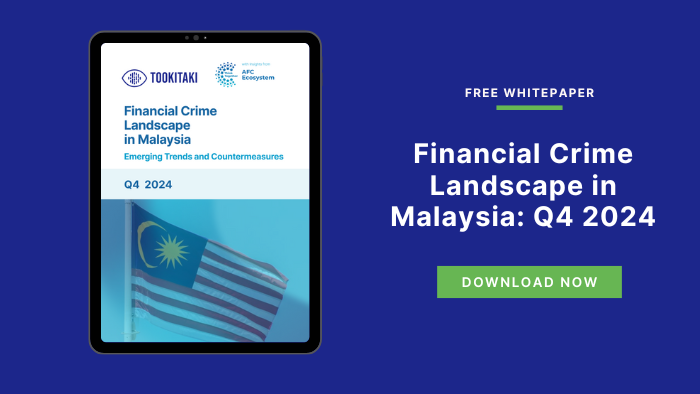Unmasking Investment Scams in Malaysia: A Growing Financial Crime Threat
In an increasingly digital world, Malaysia is experiencing a troubling surge in financial scams—particularly investment fraud. With the promise of high returns and low risk, these scams continue to victimize thousands, targeting everyone from young professionals to retirees, including expatriates. While authorities have ramped up efforts to educate the public and enforce regulations, scammers are evolving faster, exploiting digital platforms and gaps in financial literacy.
This blog aims to provide a comprehensive view of the investment scam landscape in Malaysia—how it operates, who it affects, and what steps individuals and institutions can take to fight back.
Understanding Investment Scams in Malaysia
Investment scams involve fraudsters tricking victims into investing in fake opportunities that promise high returns with minimal or no risk. These scams often appear credible, using polished websites, social media advertisements, and even fake endorsements from public figures to gain trust.
In Malaysia, these scams have gained significant traction across social media platforms like Facebook, WhatsApp, and Telegram, often masquerading as legitimate investment firms or financial advisory services.
Scammers deploy psychological tactics such as urgency ("limited-time offers") or exclusivity ("VIP-only investment groups") to manipulate their targets into making hasty financial decisions. Once money is transferred, the perpetrators disappear, leaving victims financially and emotionally devastated.
Key Trends Fueling the Rise
1. Targeting of Expatriates and Young Professionals
Expatriates, new workforce entrants, and retirees are often the most vulnerable. Expatriates may lack local regulatory knowledge, making them easy targets for cross-border schemes.
2. Digital Channels as Vehicles for Deception
Social media platforms and messaging apps have become the go-to tools for scammers. With minimal verification requirements and access to large audiences, fraudsters find these platforms to be fertile ground for recruitment and manipulation.
3. Ponzi and Pyramid Schemes
Most of these scams exhibit characteristics of Ponzi or pyramid schemes. They rely on recruitment incentives, where early victims unknowingly become part of the scam by luring others in, creating a cycle that collapses once the flow of new victims ceases.
Common Red Flags
Some warning signs of investment scams in Malaysia include:
-
Promises of 30% or more monthly returns
-
Lack of proper registration or licenses
-
Aggressive recruitment tactics
-
Pressure to act quickly or secrecy in transactions
-
Complex investment jargon without clear explanations
-
Requests for personal or banking information early on
Real Impact: RM54 Billion Lost to Scams
In recent years, Malaysia has witnessed a troubling rise in investment scams. According to the State of Scam Report 2024, the nation lost RM54.02 billion (approximately US$12.8 billion) to scams over the past year—amounting to nearly 3% of the country's GDP. Alarmingly, investment scams were the most prevalent, constituting 23% of reported cases.
This massive financial drain not only impacts individuals but also puts strain on Malaysia’s financial ecosystem and regulatory bodies. Many of these cases go unreported due to the shame and embarrassment victims feel.
How Investment Scams Exploit Financial Infrastructure
Malaysia’s modern financial systems, while efficient, also create vulnerabilities that scammers exploit. Here’s how:
1. Layering via e-Wallets and Digital Banks
Scammers often funnel funds through multiple digital wallets or accounts to obscure transaction trails.
2. Use of Mule Accounts
Funds are transferred through mule accounts opened under stolen or coerced identities, making it difficult for investigators to trace the true owners.
3. Cross-Border Transactions
Scammers frequently move funds across borders—particularly to high-risk jurisdictions with lax AML controls—making recovery even harder.
4. Obscured Beneficial Ownership
Many fraudulent schemes involve business accounts where the true ownership is hidden behind layers of fake documents or nominees, obstructing law enforcement investigations.
Regulatory Response and Public Awareness
To combat the rise in scams, Bank Negara Malaysia (BNM), the Securities Commission Malaysia (SC), and the Royal Malaysia Police (PDRM) have launched various initiatives, including:
-
National Scam Response Center (NSRC): A centralized command center for scam reporting and rapid response.
-
SEMAK Mule & CheckBeforeYouBuy: Online portals for the public to verify suspicious account numbers or investments.
-
Bersama Hentikan Penipuan (Be Smart, Stop Scams) Campaign: A public awareness campaign to educate consumers about common fraud tactics.
Despite these initiatives, scammers continue to innovate. Public awareness must be ongoing and dynamic to keep pace with evolving threats.
What Financial Institutions Must Do
Banks, fintech companies, and digital payment providers are the frontline defence against fraud. Here’s how they can respond:
1. Improve Transaction Monitoring Systems
Invest in intelligent transaction monitoring systems that detect anomalies in real-time and flag high-risk behaviors.
2. Enhance Customer Verification Processes
Strengthen eKYC protocols, enforce multi-factor authentication, and monitor suspicious login patterns.
3. Collaborate on Industry-Wide Threat Intelligence
Sharing red flags and case patterns between institutions and regulators allows for faster response and coordinated prevention.
4. Educate Customers
Run proactive awareness campaigns through SMS, emails, and app notifications to alert users to the latest scam techniques.
The Role of Technology in Fraud Prevention
Fighting investment scams requires more than manual investigation or reactive controls. Technology—especially AI and machine learning—is essential in monitoring high transaction volumes, identifying unusual behaviors, and predicting risk trends.
Key technology-led interventions include:
-
Real-time fraud detection and alerting
-
AI-powered risk scoring
-
Pattern recognition and anomaly detection
-
Scenario-based transaction monitoring
Tookitaki: A Trusted Ally in AML and Fraud Detection
In the battle against financial fraud, Tookitaki stands out with its AI-powered AML compliance platform—FinCense. Designed for scalability, accuracy, and adaptability, Tookitaki’s platform helps financial institutions:
-
Detect suspicious transaction patterns linked to investment scams
-
Minimize false positives with smart, adaptive screening
-
Collaborate via a community-driven AFC Ecosystem for shared intelligence
With the rise of complex financial scams in Malaysia, Tookitaki equips institutions with the tools to stay ahead of criminals while ensuring compliance with local and global regulations.
Final Thoughts
Investment scams in Malaysia are no longer isolated incidents—they represent a systemic threat to the financial sector and society at large. From pensioners to expatriates, no demographic is safe. As scammers get smarter, financial institutions must evolve faster.
By enhancing fraud detection systems, embracing analytics and machine learning, and empowering customers with knowledge, Malaysia can strengthen its defence against this growing threat.
And with intelligent AML platforms like Tookitaki, financial institutions can move from reactive to proactive—reducing risk, boosting compliance, and most importantly, protecting people.
Anti-Financial Crime Compliance with Tookitaki?






